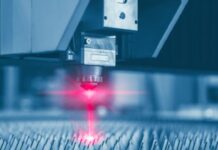Biometric face spoofing attacks have dramatically increased globally during the past few years. Liveness Detection helps you tackle this.
Hackers are currently using every trick in the book (including 3D masks and printed images) to get around biometric facial authentication systems. Even they cheat facial recognition software by using images from Facebook and other social media sites.
To avoid face spoofing or presentation attacks, we’re going to introduce you to some liveness detection techniques in this post (PA). But first, let’s define a facial spoofing assault in more detail.
Facial spoofing attack: what is it?
For those who are unaware, facial spoofing is the technique by which a cybercriminal attempts to obtain unauthorised access to someone else’s rights by misrepresenting the face of an authorised person in a photo, video, or another piece of media. If successful, the con artist obtains the other person’s rights. Thus, here face liveness verification comes in a way to stop this.
Face spoofing attacks can carry out in many different ways by hackers. Here are a few typical approaches that you can look into.
Face spoofing attack classifications:
The majority of face spoofing attacks fall into the presentation attack category. Such assaults trick facial recognition software by exploiting 2D and 3D (statistic or dynamic) objects.
Assaults against 2D presentations: Static 2D attacks involve the use of paper cutouts, photographs, or facial masks; dynamic 2D attacks involve the use of picture sequences or screen replays.
Cybercriminals use 3D prints and sculptures in 3D static presentation attacks, while in dynamic versions, they deploy sophisticated robotics to trick face recognition software.
Of course, spoofers employ a variety of techniques. Attacks on presentations are changing as technology advances. However, 2D attacks are rather common because of technological restrictions.
While it is true that spoofing attacks can easily target facial recognition systems. This does not indicate that they do not avoid You can protect yourself against hacking attempts by using some biometric liveness checks.
How Can Liveness Detection Prevent Identity Spoof?
There are numerous ways to defend against spoof assaults. All of these fall under the umbrella of “liveness detection.”
Liveness detection seeks to determine whether a face was made by cybercriminals or is actually alive. In essence, the system can distinguish between a real face and a fake one.
The terms active and passive liveness detection refer to the two main methods of liveness detection. Users of the active method are required to interact with a facial recognition system in order to demonstrate their “liveness.” Contrarily, passive liveness detection doesn’t require any user activity and is hidden from the user.
Detection of Active Face Liveness
As previously noted, active face liveness detection is an interactive method of spotting fraud; users must stand in front of a camera and carry out specific behaviours to prove their status within the system.
These behaviours could include smiling, nodding, blinking, etc. These actions can occasionally generate to give the system an additional layer of security. Users won’t be able to access the system until they have finished all the necessary tasks.
Detection of Passive Liveness
Although active face detection offers strong protection against face spoofing, it might not always be the best option because it necessitates user participation.
Passive liveness detection occasionally proves to be a practical safety measure. Users don’t have a way of knowing they are being tested with this form of detection. Everything control by the detection equipment on its own.
Frequently Used Anti-Spoofing Methods
It is now evident that spoofing attacks can be used to trick face identification systems based on 2D and 3D photos. It is also true, though, that attacks of this nature can be stopped by liveness detection methods based on texture, motion, form, colour, or reflectivity.
Here are a few well-liked liveness detecting methods:
Detection of eye blinks
The accuracy of eyeblink detection is the highest. The simple act of watching for natural eye blinking can reveal whether or not a face is alive. The average person blinks 15 to 30 times per minute, and each time, the eyes close for about 250 milliseconds.
Modern, cutting-edge cameras have the ability to shoot videos with much fewer frame gaps. Therefore, implementing eye blink detection can aid in spotting and avoiding such presentation threats. This approach can strengthen by the use of deep learning.
In-depth Learning
The use of deep learning is yet another powerful anti-spoofing strategy. It is possible to train a convolutional neural network, or CNN, to distinguish between authentic and fake images. Many companies have already started using this technology to safeguard their systems.
Technique of Challenge-Response
A challenge-response system verifies a user’s identity based on a sequence of tasks such as head motions, grins, and happy and sad facial expressions. When liveness detection is added to the facial recognition technology, the system becomes very strong.
3D Camera:
One of the most effective methods for preventing spoofing is the use of 3D cameras. These cameras have the ability to distinguish between a face and a flat shape. They offer excellent accuracy defence against presentational attacks as a result.
Wrapping it up:
In the upcoming years, liveness detecting technologies will use for a lot more. Deep learning and artificial intelligence use together to strengthen and improve face anti-spoofing technologies.









![Anso FG Reviews: UPDATED 2024 [ansofg.com] Anso FG Reviews UPDATED 2024 [ansofg.com]](/wp-content/uploads/2023/12/Anso-FG-Reviews-UPDATED-2024-ansofg.com_-100x70.png)








